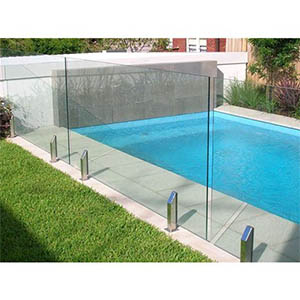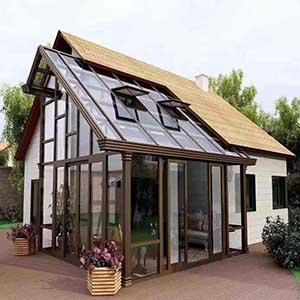Understanding the Composition of Safety Glass
Safety glass has become an indispensable material in various industries, providing essential protection in automotive, construction, and even everyday applications. This article delves into the composition of safety glass, exploring its types, manufacturing processes, and unique properties that make it vital for modern safety standards.

The Basics of Safety Glass
Safety glass is engineered to be less likely to break, or if it does break, to do so in a manner that reduces the likelihood of injury. This is achieved through various manufacturing processes that alter the physical properties of the glass, enhancing its strength and behavior under stress [4].
Types of Safety Glass
There are several types of safety glass, each designed for specific applications and safety requirements. The primary types include tempered glass, laminated glass, wire glass, and bullet-resistant glass [3].
1. Tempered Glass
Tempered glass, also known as toughened glass, is made by heating ordinary glass to a high temperature and then rapidly cooling it. This process creates a surface compression that significantly increases the strength of the glass. When broken, tempered glass shatters into small, blunt pieces rather than sharp shards, reducing the risk of injury [5].
2. Laminated Glass
Laminated glass consists of two or more layers of glass bonded together with an interlayer of polyvinyl butyral (PVB) or ethylene-vinyl acetate (EVA). This construction holds the glass in place even when shattered, providing a high level of safety by preventing large, dangerous pieces of glass from becoming airborne. Laminated glass is commonly used in windshields, skylights, and other applications where impact resistance and sound insulation are important [6].
3. Wire Glass
Wire glass incorporates a mesh of wire within the glass, which holds the glass together when broken. This type of glass is often used in fire-rated doors and windows, providing both fire resistance and physical security [4].
4. Bullet-Resistant Glass
Bullet-resistant, or ballistic glass, is designed to withstand impacts from bullets and other high-velocity projectiles. It typically consists of multiple layers of glass and polycarbonate, a durable thermoplastic, that can absorb and disperse the energy of a bullet. This type of glass is used in security applications such as bank teller windows, armored vehicles, and military installations [2].
Manufacturing Processes
The manufacturing processes of safety glass are critical in defining its properties. Each type of safety glass undergoes a specific process that enhances its strength and safety characteristics.
Tempering Process
The tempering process involves heating the glass to approximately 620 degrees Celsius and then rapidly cooling it with jets of air. This rapid cooling creates a state of compression on the surface and tension in the interior. The resulting glass is four to five times stronger than untreated glass. Tempered glass is used in various applications, including side and rear windows in vehicles, shower doors, and glass doors [5].
Lamination Process
In the lamination process, multiple layers of glass are bonded with an interlayer of PVB or EVA. The glass layers and interlayer are assembled and then subjected to heat and pressure in an autoclave. This process fuses the layers into a single, cohesive unit. Laminated glass retains its integrity when broken, making it ideal for use in windshields, skylights, and other applications where safety and security are paramount [6].
Wire Embedding
Wire glass is produced by embedding a wire mesh within the glass during the manufacturing process. The wire mesh acts as reinforcement, holding the glass together if it breaks. This type of glass is particularly useful in applications requiring fire resistance and added security, such as in doors and windows of industrial buildings [4].
Polycarbonate Layering for Bullet Resistance
Bullet-resistant glass is created by layering multiple sheets of glass and polycarbonate. The process involves alternating layers of these materials, bonded together under heat and pressure. The polycarbonate layers absorb and disperse the kinetic energy from bullets, preventing penetration and reducing the risk of injury. This type of glass is used in high-security environments where protection from firearms is necessary [2].
Applications and Benefits
Safety glass is used in a wide range of applications, each benefiting from its unique properties.
Automotive Industry
In the automotive industry, safety glass is essential for windshields, side windows, and rear windows. Laminated glass is used for windshields due to its ability to hold together when shattered, providing a barrier against ejection and reducing injury risk. Tempered glass is used for side and rear windows, where its strength and shattering characteristics enhance safety [3].
Building and Construction
In construction, safety glass is used in windows, doors, skylights, and facades. Laminated glass offers impact resistance and sound insulation, making it ideal for use in high-rise buildings and areas prone to hurricanes and earthquakes. Tempered glass is commonly used in doors, shower enclosures, and balcony railings due to its strength and safety characteristics [2].
Security and Protection
Bullet-resistant glass is used in high-security applications, including banks, military installations, and vehicles for VIPs and law enforcement. The multi-layered construction provides robust protection against ballistic threats, ensuring the safety of occupants [2].
Innovations and Future Trends
The field of safety glass is continually evolving, with new technologies and materials enhancing its properties and expanding its applications. Recent innovations include smart glass technologies, such as electrochromic glass, which can change opacity on demand for privacy and energy efficiency. Self-cleaning coatings and enhanced UV protection are also being developed to improve the functionality and longevity of safety glass.
Researchers are also exploring the use of nanotechnology to create even stronger and more resilient glass. By manipulating materials at the molecular level, scientists aim to develop glass that offers superior protection without sacrificing clarity or aesthetics.
Conclusion
Understanding the composition and manufacturing processes of safety glass is crucial to appreciating its role in modern safety and design. From the tempered and laminated glass in vehicles and buildings to the wire and bullet-resistant glass in high-security environments, safety glass protects and enhances our lives in countless ways. As technology advances, the potential for new applications and improved safety features continues to grow, ensuring that safety glass remains a vital material in our built environment.
 English
English Russian
Russian




